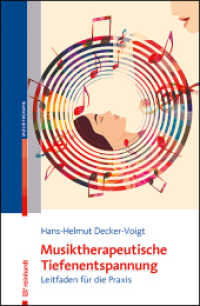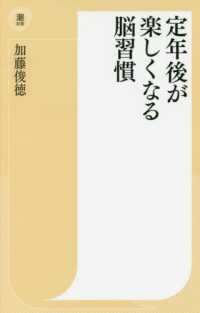- ホーム
- > 洋書
- > ドイツ書
- > Social Sciences, Jurisprudence & Economy
- > Politics, Society, Work
- > miscellaneous
Full Description
This book examines trauma in late twentieth- and twenty-first century American popular culture. Trauma has become a central paradigm for reading contemporary American culture. Since the early 1980s, an extensive range of genres increasingly feature traumatised protagonists and traumatic events. From traumatised superheroes in Hollywood blockbusters to apocalyptic-themed television series, trauma narratives abound.
Although trauma is predominantly associated with high culture, this project shows how popular culture has become the most productive and innovative area of trauma representation in America. Examining film, television, animation, video games and cult texts, this book develops a series of original paradigms through which to understand trauma in popular culture. These include: popular trauma texts' engagement with postmodern perspectives, formal techniques termed 'competitive narration', 'polynarration' and 'sceptical scriptotherapy', and perpetrator trauma in metafictional games.
Contents
1. Introduction.- 2. Trauma and Postmodernism: Mark Z. Danielewski's House of Leaves and Stanley Kubrick's The Shining .- 3. Competitive Narration: Tim Burton's Batman Returns and David Lynch and Mark Frost's Twin Peaks .- 4. Polynarration: in The Wachowskis' Sense8 (2015-2018), Rebecca Sugar's Steven Universe (2013-2019), and Nia DaCosta's Candyman (2021) .- 5. Sceptical scriptotherapy in Brit Marling and Zal Batmanglij's The OA and Sam Esmai's Mr Robot.- 6. Perpetrator Trauma in Video Games: Team Salvato's Doki Doki Literature Club and Toby Fox's Undertale.- 7. Conclusion.








